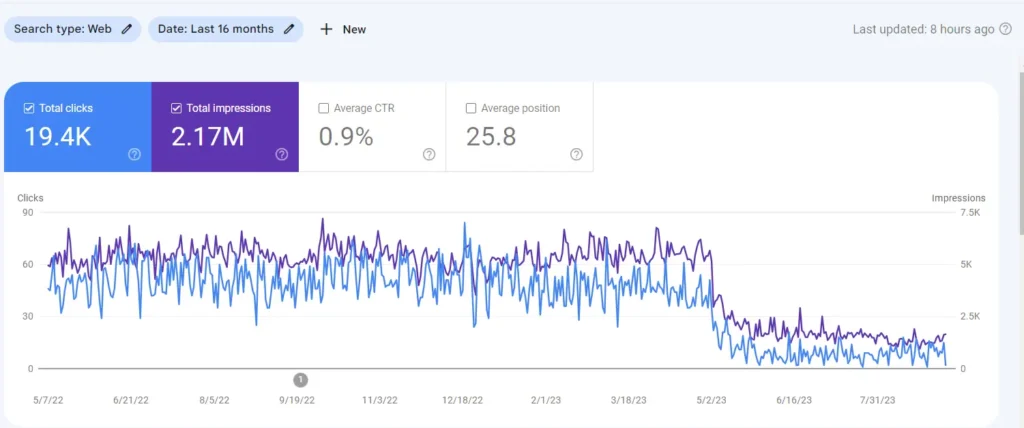Search Engine Optimization (SEO) is an evolving discipline. As search engines become more sophisticated, so do the methods and techniques required to rank organic search results. One area that is often overlooked or misunderstood is the significance of sub-domain continuity in SEO best practices. If you manage multiple sub-domains under one primary domain, ensuring that they all follow a unified SEO strategy is vital for driving organic traffic and maintaining the credibility of your overall web presence.
What Is a Subdomain?
Before diving into the nitty-gritty of sub-domain continuity, let’s clarify what a subdomain is. A subdomain is a separate section of a website that operates under the main domain name. For example, blog.example.com and shop.example.com are sub-domains of the primary domain example.com.
Subdomains can also be set up by adding the www in front of an address or not. If you choose to do this, make sure that you have your website set up to accurately redirect traffic. A lot of users don’t manually put in the www when they search or go to a website.
Subdomains are useful for a lot of technical and SEO considerations. Let’s take a look at what having proper subdomain continuity can do for your website and why it’s important.
Why Subdomain Continuity Matters
Unified Brand Experience
Customers and users expect a seamless experience when navigating through different parts of your website, whether it is the blog, shop, or support portal. Subdomains should present a unified brand voice and visual design. A consistent user experience not only improves engagement and dwell time but also sends positive signals to search engines, which can lead to improved search rankings.
While subdomains are treated as separate entities, they can improve the overall domain authority of your website. Having a unified brand experience and following SEO best practices will help each subdomain rank higher as well.
Domain Authority
Search engines, especially Google, assess the authority of your domain as a whole and its individual subdomains. Having multiple subdomains with low-quality content or poor user experience can dilute your overall domain authority. By maintaining continuity in SEO best practices across all subdomains, you can pool together the authority, thereby strengthening your website’s overall SEO performance.
Another consideration to make is that subdomains do not inherit authority from the main domain. This means that each subdomain may contribute positively, but domain authority will have to be built up in each subdomain specifically.
Link Equity and Internal Linking
Subdomains don’t share link equity, which means that the backlinks one subdomain receives won’t benefit the domain as a whole. Internal linking between subdomains and the main domain is critical for guiding search engine crawlers and also helps distribute link equity effectively.
A subdomain does not benefit from link equity on the main domain. Make sure to build up high-quality backlinks on all subdomains if you want them to rate higher as an individual page or subdomain. Each subdomain will be treated as a separate website.
Content Relevancy and User Intent
Search engine algorithms are increasingly focusing on content relevancy and user intent. The more coherent and unified your content strategy across subdomains, the better you’ll be at satisfying these criteria. Subdomain continuity allows you to create a more cohesive content network where each piece supports and enhances the others.
You can think of it as a web of connected, independent websites. When you change a page from the main domain to a subdomain, it becomes a unique website property. If you were to change the basic address of your main domain, you would create an entire array of subdomains that will each be different.
Best Practices for Maintaining Subdomain Continuity
Design and UI
Make sure that all your subdomains follow the same design and UI principles. This doesn’t necessarily mean they have to look identical, but the core design elements like color scheme, navigation, and branding should be consistent.
You can set up subdomains to be a staging website. This can help you apply changes and see how they will impact your design and UI. This can be a great tool if you intend to make changes to the main domain and want to make sure they will work.
SEO Settings and Meta Tags
Subdomains should have uniform meta tags, including title tags, meta descriptions, and header tags that align with the overall SEO strategy of the primary domain. A discrepancy in meta tags can confuse search engines and users alike.
People like to see what they expect, and any deviation from this can be a jarring experience. The last thing you want to do is confuse the search engine or your users. This will lead you to lose ranking and damage your SEO investments.
Internal Linking Structure
The internal linking structure should be strategically designed to facilitate the easy flow of link equity and user navigation. Include contextual links where relevant, and make sure to use descriptive anchor texts that are consistent with your SEO keyword strategy.
When it comes to maintaining SEO ranking and links, remember that subdomains will require you to create 301 redirects. If you change a website from www.example.com to example.com, you’ll have to use 301 redirects for every internal and backlink that once went to the www address.
Content Strategy
The content across your subdomains should be aligned in terms of quality and subject matter. Ensure that each subdomain offers unique value and adheres to the same quality standards as your primary domain.
If you have low-quality content on your subdomains, it will negatively impact their ability to rank. It can also contribute to a net drop in your ranking for the main domain. People aren’t going to be interested in using your website.
Monitoring and Reporting
Last but not least, it’s crucial to monitor the performance of each sub-domain continually. Use tools like Google Analytics and Google Search Console to track metrics like traffic, engagement, and conversion. Assess these metrics collectively for the entire domain as well as individually for each subdomain.
It should be noted that changing or creating subdomains will impact where and how you look for them. If your metrics are set to look for www.example.com, and you change it to example.com, your metrics will need to be adjusted.
This can make any change in the structure of your main domain, and subdomains feel like a reset of your SEO strategy. Be careful to make sure that such a change doesn’t happen inadvertently, as it will negatively impact your efforts.
Challenges of Sub-Domain Continuity
While the importance of maintaining subdomain continuity is clear, implementing it can be challenging. One common hurdle is the operational silos within an organization. For example, the team managing the blog may not be in sync with the team managing the online shop, leading to inconsistencies in SEO implementation.
Another challenge is technical constraints. Different subdomains may be built using different platforms or technologies, making uniform SEO practices hard to implement. Technical changes are difficult and require planning and setup to be successful.
These types of issues can lead to a collapse of your SEO strategy. Make sure that all members of your team, including marketers, are aware of what is going on and what you need. This will help prevent you from experiencing a reset to your ranking or domain authority.

Here at Nozak Consulting, we have a client in the auto repair industry who works with two different marketing agencies. The other company built, owns, hosts, and operates the website but we do on-page and off-page SEO for them. Recently the other marketing agency switched the root domain from no www. to www., causing mayhem with their analytics. We want to warn people about making changes like this and about not holding their agencies accountable.
Subdomains and Marketing
Subdomain continuity isn’t just a good-to-have feature but a necessity in modern SEO strategy. The benefits are manifold: a unified brand experience, higher domain authority, effective link equity distribution, and enhanced content relevancy.
By following best practices, regularly monitoring performance, and overcoming operational and technical challenges, you can ensure that your subdomains contribute positively to your SEO goals.
Ignoring subdomain continuity can result in missed opportunities and even penalties, making it critical to give this aspect the attention it deserves. Thankfully, with a bit of practice and with the right marketers on your side, any subdomain and main domain transitions can be solved without undue loss of investment or time.
